Patchwork tools overview
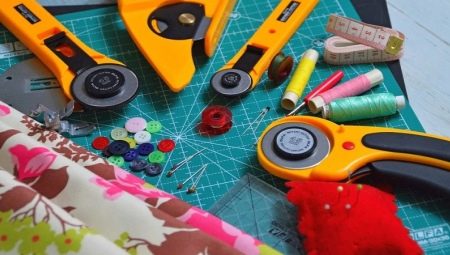
Patchwork - this is the creation of a canvas from a large number of different fragments of fabric, differing in shape, size and color. They first began to practice this direction in Asia, it appeared because of poverty. It was more economical to fix old things with scraps of cloth than to buy new ones. Over time, this method has become a whole separate direction with a decorative bias.
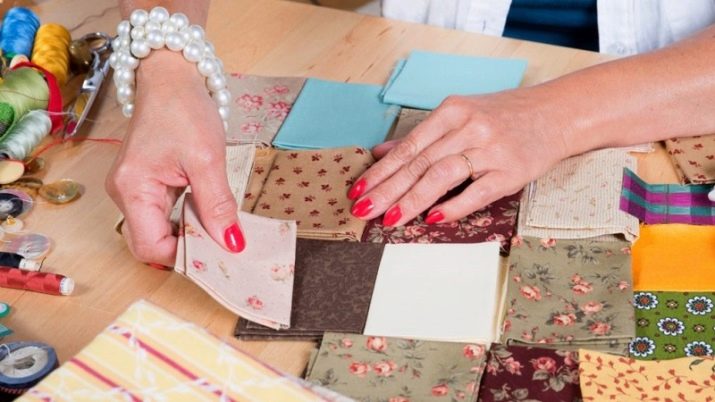
Basic tools
Cutting devices.
- Scissors - there are no individual scissors for cutting out flaps, it is better if they are made of steel or from materials that do not lend themselves to corrosion. Length from 18 to 25 centimeters.
- Roller knife or cutter - resembles a pizza knife in appearance, has a disc-shaped blade with a handle. With it, you can cut out parts from fabric folded in several layers. The knife is produced in several standard diameters - 18, 28, 45, 60 millimeters. The larger the size of the cutting blade, the greater the output, but its maneuverability is lost. Such a knife is suitable for cutting parts in a straight line, a small knife is useful for cutting out small pieces or curly pieces. So that the knife does not quickly become dull and the working surface is not damaged, a special mat is used.
- Roller knife mat - an irreplaceable tool, it is best to choose rubber or self-healing mats, they can be used to cut fabrics rolled into 3-4 layers. For advanced craftsmen, rugs with a swivel base have been created. They have a dimensional grid, which makes it possible not to measure out future details with a ruler very accurately. In order for this tool to serve as long as possible, you should remember a few rules: it recovers only from light cuts, you do not need to cut the fabric in the same place.In no case should you iron on it - the rug does not withstand high temperatures. Also, you cannot put heavy objects on it.
It is better to store on a horizontal surface, with the exception of mats with special hooks for hanging.
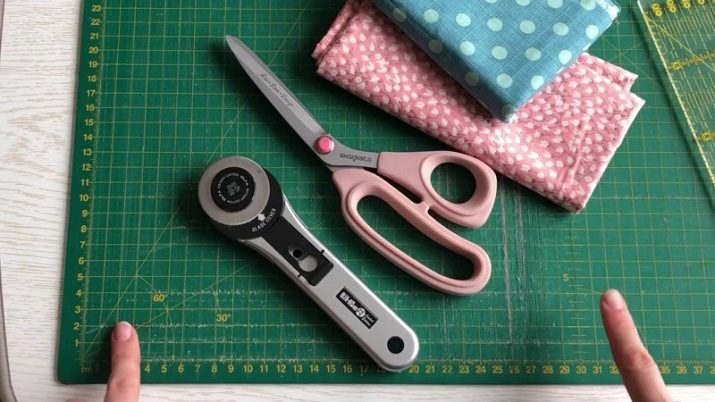
Measuring tools.
- Rulers... The most convenient is a wide, transparent ruler through which the fabric will be visible. You need to pay attention to the scale, it should have a markup of 1 millimeter. A large wooden ruler 90 centimeters long will be used for large items.
- A measuring tape or meter has a combined marking: centimeter and inch. In patchwork, the measuring system of inches is most often used, it is more convenient to purchase a combined version. The shape of a synthetic tailor's meter is practically not deformed.
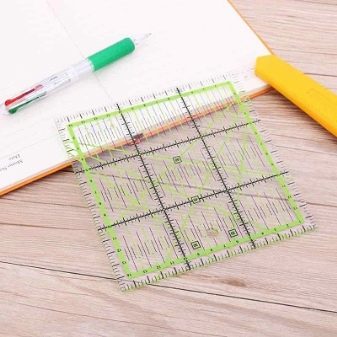

Marking accessories:
- special chalk for drawing lines on the fabric, with it the lines are more clear;
- remnant with pointed ends;
- markers that are washable and do not leave marks.
Also in the patchwork technique is simply necessary iron... Patchwork includes three processes - cut, stitch and iron. But it is worth remembering that ordinary ironing, to which everyone is accustomed, leads to deformation of the fabric, so the iron must be pressed.
In order to avoid unpleasant surprises, it is worth trying to iron a small piece of fabric first and watch its reaction.

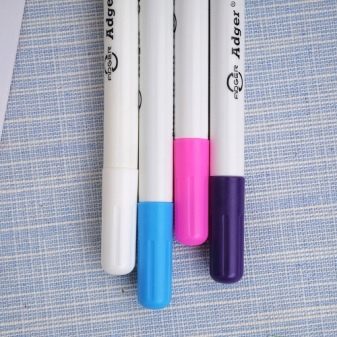
In this direction, two types of irons are used.
- Mini iron, its design, like a conventional iron, the difference in size, the sole is not more than a palm.
- Long handle iron - suitable for ironing out seams, corners and places where a simple iron will not work. Has interchangeable attachments, ironing surfaces of different sizes and thermal knives for trimming fabrics that tend to crumble. With this nozzle, the edge is melted, as it were.
Templates necessary to obtain neat flaps. You can buy ready-made plastic, plexiglass or thick cardboard. Or do it yourself: draw the outlines of the future figure and allowances on the outside by 1 centimeter and cut out the template. Sewing machine. The flaps can be joined both manually and with a sewing machine.


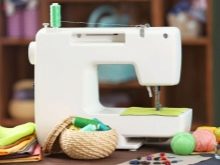
Additional accessories
- Pins and needles, choose durable and sharpened so that they do not break or bend during operation. Pins are used when sewing small pieces or to connect rows. The needles take on different lengths and thicknesses, since all tissues have different densities. There is a special numbering from 0 to 12 - the higher the number, the thicker the needle.
- Thimble - a tool to protect your fingers while sewing by hand. It should fit snugly and not squeeze your finger. For its manufacture, plastic and metal are used.
- Threads any are suitable both for work in manual technique and using a sewing machine. Their numbering starts from 10 (thick threads) and ends with 80 (thinnest).

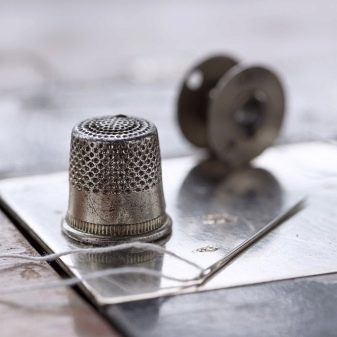
How to choose?
It is better to immediately buy a set of three patchwork tools, without which you will not be able to get started - this is roller knife, rubber mat and ruler. When choosing a knife, focus on whether the tip closes; it will be more correct if this action can be done with one hand. Better to buy a cutter sharpener or a set of replacement blades right away.
When making a purchase of a rubber mat and ruler, first of all it is worth looking at their dimensions.... It will be inconvenient to work on a small rug, the optimal size is 50 x 60 centimeters.
Patchwork rulers should be made of high-strength plastic, regular rulers - plastic, wood or metal - will not work.

The sewing machine should have several functions to make the job easier.
- The ability to turn off the lower conveyor. Thanks to the teeth of the conveyor, the fabric moves smoothly during work; when sewing a patchwork fabric, these teeth should be lowered, which will allow you to move the material manually and set the desired stitch length and pattern.
- Function to regulate the pressure of the presser foot on the fabric.
- Sewing speed control function.
- The presence of a spring foot.
- Platform size is the distance from the needle to the body on the right side. The longer the platform, the more comfortable it is to sew bulky items.
- The presence of an additional table to expand the working surface.
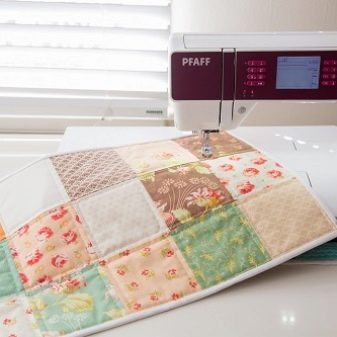
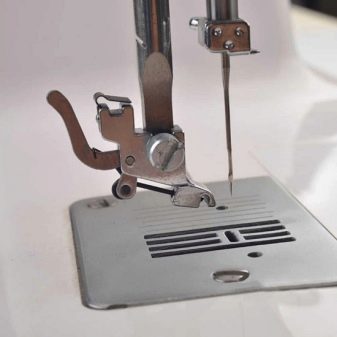
For information on what tools are needed for patchwork sewing, see the next video.








